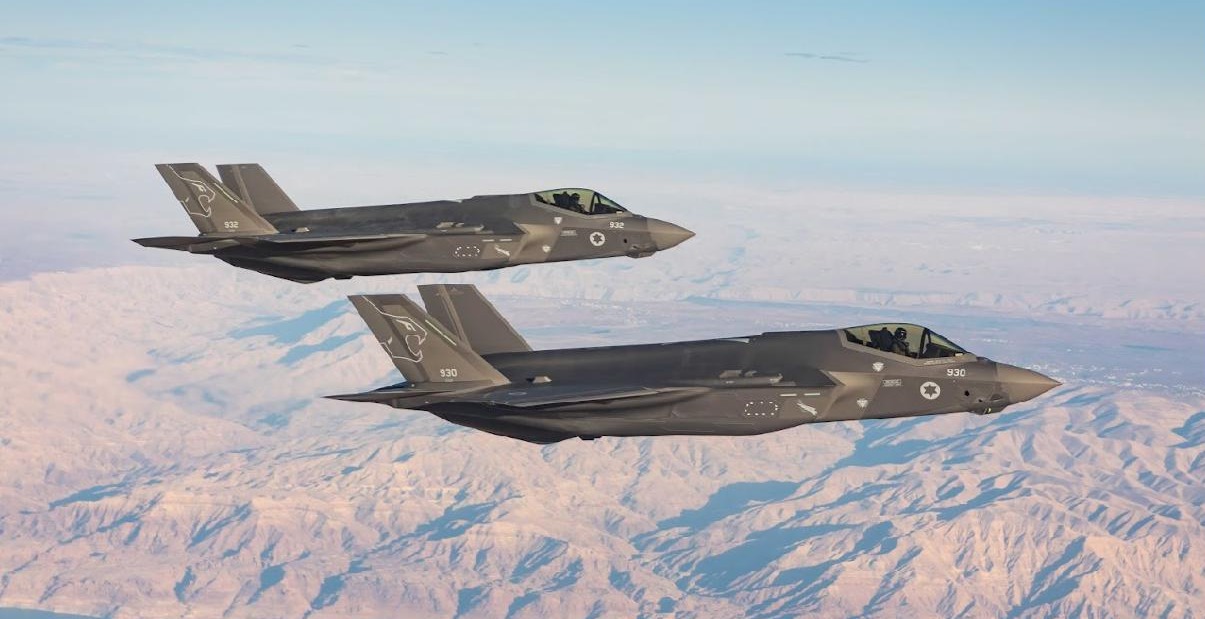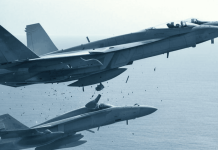Earlier this month, the Israel Air Force (IAF) executed a long-range mission against the Houthi militia, almost thirty years after a similar operation took place in 1985 with F-15 Eagles. This time, however, the strikes were conducted using Israel’s F-35I Adir stealth fighters.
Earlier, ‘Operation Wooden Leg’ marked Israel’s extensive military operation targeting the Palestine Liberation Organization (PLO) headquarters in Tunis. The Israeli Air Force deployed at least ten two-seat F-15B/D Eagle Baz fighter jets, which traveled approximately 2,200 kilometers from Israel to strike the intended target, achieving a remarkable feat for the nation.
Experts lauded the operations, noting Israel’s capability to strike targets at long distances using fighter jets. At the time, these long-range strike missions were only undertaken by bombers, which the IAF did not have. The IAF F-15s had reportedly covered the distance with the help of two air refuellers.
Earlier this month, Israel carried out a similar mission in retaliation to a drone strike carried out by Yemen-based Houthi militia in Tel Aviv. The strikes were conducted against Yemen’s Red Sea port city of Hodeidah.
The stealthy F-35 Adir combat jets—the most advanced in Israel’s fleet—were entrusted with the operation to strike the Houthis. Analysts emphasized that the operation was significant as the target struck was 1,700 kilometers from Israel.
The IAF currently uses an enhanced version of the F-15 and F-16 fighter jets, both of which are more capable than the F-15s that targeted the PLO Headquarters in 1985.
Nevertheless, the operation was spearheaded by the F-35 Adir, marking Israel’s first direct strike in Yemen. According to reports in Israeli media, the F-15 and F-16 were also part of the mission, albeit only for refueling protection.
Israeli Defense Minister Yoav Gallant said, “The fire that is currently burning in Hodeidah is seen across the Middle East, and the significance is clear. The Houthis attacked us over 200 times. The first time that they harmed an Israeli citizen, we struck them. And we will do this in any place where it may be required.”
The operation has been promoted as a notable tactical success for Israel, particularly as the nation has been quite outspoken about the necessity of demonstrating military strength beyond its borders and has indicated plans to target its primary regional adversary, Iran. Although the F-35s traveled 1,700 kilometers during Operation Outstretched Arm, Iran is located approximately 1,500 kilometers from Israel.
All said, the F-35 Adir fighters emerged as heroes after the operation and demonstrated the ability to undertake long-range strike missions. This is significant given that Israel is the only country in the Middle Eastern Region with a fleet of F-35 fighters.
🚨🇮🇱ISRAEL: LOOK AT THE COOL PLANES WE USED TO BOMB YEMEN…
The IDF released images and videos of F-15 fighter jets being prepared ahead of the strike in Yemen.
The attack also involved Israeli F-35 fighters, refueling planes, and reconnaissance aircraft.
Source: Times of… pic.twitter.com/Jw3eaBeiYy
— Mario Nawfal (@MarioNawfal) July 20, 2024
The F-35 is a single-engine aircraft with a single pilot, as opposed to an F-15 Ra’am or an F-16I Sufa, which includes a pilot and navigator crew that can help with advanced attack munitions operation.
However, the fifth-generation aircraft is believed to be better suited for long-range operations. The first of these benefits is stealth: the F-35’s structure and the materials it is coated with absorb most electromagnetic waves, making it extremely difficult for radars to detect. Compared to an F-15 or F-16, an attacking F-35 will typically be discovered significantly later, leaving little time for a response.
That is not all. While the F-35 Lightning II jets produced by Lockheed Martin are formidable, Israel’s version, known as ‘Adir,’ is specifically customized to meet its unique needs, which have proven its efficacy with Operation Overstretched Arm.

Israel’s F-35 Adir Is A War Machine
Israel is one of the few countries which was allowed to modify the US-made fifth-generation fighter aircraft. Initially, the US refused to allow Israeli modifications to the F-35. However, a compromise was reached: nothing inside the aircraft was changed, and the Israelis were allowed to add capabilities to the existing infrastructure.
The Israeli Air Force (IAF) gave the F-35 a Hebrew name, Adir, meaning “Mighty One”. The Israeli F-35s are modified in these main areas: command, control, communications, computers, and intelligence (C4I), electronic warfare, and weapons integration.
The Adir has been specially designed to satisfy Israel’s particular security needs. It has sensors, data processing capabilities, countermeasures made in Israel, and cutting-edge electronic warfare systems. Israel’s capability to carry out intelligence operations, electronic warfare, surveillance, and reconnaissance has significantly improved since its deployment.
Equipped with an indigenous electronic warfare system (EWS), the Adir has sensors and countermeasures made in the country, along with helmet-mounted displays and additional data collection and processing tools. The platform’s advanced electronics suite allows pilots to disrupt adversary ground-fired anti-aircraft weaponry’s guidance systems and electronics, making it ideal for carrying out a strike.
The IAF needs a customized EWS system because its main enemies are non-state players like Hamas and Hezbollah, as well as regional proxy groups that are unable to match its aerial capabilities. By identifying potentially dangerous or hostile frequencies, these systems allow pilots to interfere with or take down enemy communications or weapon guidance systems.

Israel is in the process of procuring a third squadron of Lockheed Martin aircraft, having already ordered 50 of them, the majority of which have been delivered. The list includes sophisticated thermal, optical, and radar sensors, the capacity to intercept radar broadcasts, and, most importantly, the ability to combine and cross-reference this data.
This enables it to find targets, choose the safest flight path with the fewest opportunities for detection and interception, and communicate with other aircraft and rear command centers. The F-35 is not only an attack aircraft but also possesses capabilities that, until recently, were only possible with surveillance and intelligence-gathering aircraft.
One quartet of Adir aircraft may strike up to 60 targets, with a single F-35 carrying a variety of intelligent bombs that can be released from dozens to even hundreds of kilometers away from the target. A couple of years ago, the IAF added a new one-ton bomb to the arsenal of armaments used by F-35s that can be placed within the plane’s internal weapons chamber without compromising the plane’s stealth radar signature.
This is also the reason why Israel’s F-35 has been targeted by Iran. As part of its aerial strike against Israel in April 2024, Iran struck the Nevatim Air Base, which houses the IAF’s F-35I Adir fighter jets. At the time, a report in the Times of Israel (TOI) said the “main target of Iranian drones and missiles…appeared to be a sensitive air base in southern Israel, Nevatim, home to the F-35 stealth fighter jet, the military’s most advanced aircraft.”
According to experts, Operation Overstretched Arm was an Israeli demonstration of its long-range strike capability and the efficacy of its F-35 Adir jet, which could hit and go without being intercepted.
- Contact the author at sakshi.tiwari9555 (at) gmail.com
- Follow EurAsian Times on Google News




